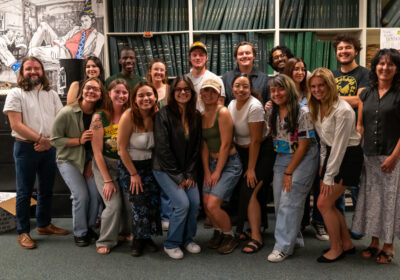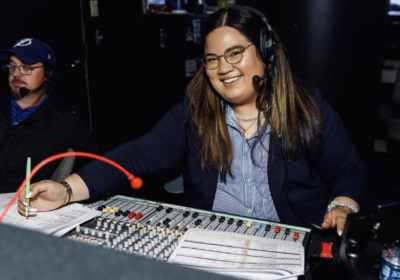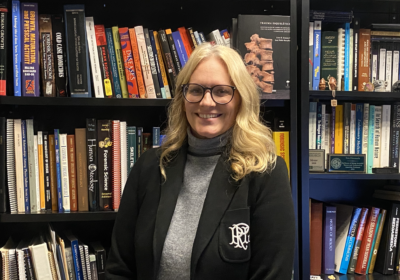Local artist shows strength of Muslim women

Work from local artist Ameena Khan is now on exhibit in the CMC until July 31, featuring works such as '"And the Bombs Fell like Rain" (left) and “No Need for Rescue” (right).
ARTWORK PROVIDED BY AMEENA KHAN
When talking about Muslim women, one artist says there’s a tendency in America to categorize Muslim women into either the victim who needs to be rescued and saved from her people or from her religion.
Ameena Khan, local contemporary artist whose art communicates the everyday struggles and victories of Muslim women, said she is creating pieces that expand the narrative about Muslim women.
Hosted by the USF Department of Women and Gender Studies and artist-led organization Art2Action, Khan’s work will be featured in the on-campus gallery “Dialogue in Color,” which is free and open to the public in 202F of the College of Arts and Sciences Multidisciplinary Complex (CMC) until July 31.
Though born and raised Muslim, Khan said she only began wearing the hijab in 1998 when she was still in college. Since then, there was a culture shock, not from her fellow Muslims but from her fellow Americans.
“I went from being a regular American – fitting in, no one looked at me twice,” Khan said.
“I was an American basically, you don’t even need to say ‘regular’. Just American and now I’m a foreigner. So I’ve had both sides of the equation where I’ve fit in and then I don’t fit in anymore. Where I’m part of the majority and then where people probably assumed I was Christian and now I’m obviously Muslim and so now I’m part of a minority. So it’s been a very interesting transition, something I didn’t expect at all. That experience is quite different than what one might experience if you were raised in a predominantly Muslim country.”
Khan said one of her main objectives in galleries like the one at the CMC, is to project stories of Muslim women that are complex and dive further into the emotional burdens behind them.
One piece in particular, “No Need for Rescue” depicts a fierce Muslim woman glaring at the viewer from the frame. Her lips pursed and eyes fixed, her face and clothes left unpainted on an indigo backdrop, the piece demands attention.
“With that piece in particular, it’s addressing the idea of the Muslim woman being a victim of her religion, of the male figures in her family because that’s a common perspective – that the men are controlling the women,” Khan said.
The emotions Khan felt toward this and other misunderstandings of Muslim culture manifested themselves in an unexpected way when she began sketching “No Need for Rescue.” After about five sketches, she said the direction had shifted away from the original outline.
“I was going to move in a very different direction with the work,” Khan said. “But when the woman was realized and staring back at me on the canvas, as a sketch before I painted her, I realized she was much more powerful than what my original plan was. So I kind of went with it and tried to bring out the power and the energy behind the work.”
Ultimately the piece became a symbol for a woman who is very strong and not a victim, Khan said.
“In general, most Muslim women that you would meet are like that, they’re very brave and courageous and they believe in what they do and what they wear and how they choose to dress and I like that,” she said.
Khan describes herself as an emerging artist with a long road ahead of her in the Tampa art scene. She moved here from her hometown of Gainesville three years ago. While she builds her portfolio in the city, Khan said the motivation behind her work is more than simple notoriety and fortune. Her motivation comes from God and from spreading awareness and acceptance throughout the community, at universities in particular.
“My focus right now is creating a series of pieces for this show which is all about communicating the American Muslim woman perspective and then once that is ready, to have it travel to different universities because I think that is the best place to have those conversations,” Khan said.
She said women’s studies departments, religion departments and other fixtures of a college campus are where her work will have the greatest impact, not necessarily selling it at an art or street festival.
“I do that too, but I think the galleries at universities are more appropriate for my work,” she said.
Escape is a recurring theme in Khan’s work, many of her subjects look upward and even her brushstrokes tend to lift up and away from the canvas. She expressed this as a reaction to how Muslim women face various stigmas in the West, where they often want to escape from persecution and discrimination.
“There’s a very real need for Muslim women, and me as well, this need to escape the tension and the sadness and the fear,” she said.
Khan said fear was something that has shut down the conversation between Muslims and the rest of Western Civilization.
“Many of my friends have had scary experiences where their physical being is at risk, but thankfully I haven’t,” Khan said. “What I do feel is the barrier between people. So people are afraid to talk to me or avert their gaze or just don’t want to have that interaction.”
Khan said she would like to have a conversation, if only others were interested in what she has to say.
“There could be any number of reasons,” she said. “I don’t get to have those conversations because they’re not willing to have those conversations with me. So I feel the barrier and it’s a very significant difference between who I was when I wasn’t wearing the scarf to who I am now.”






